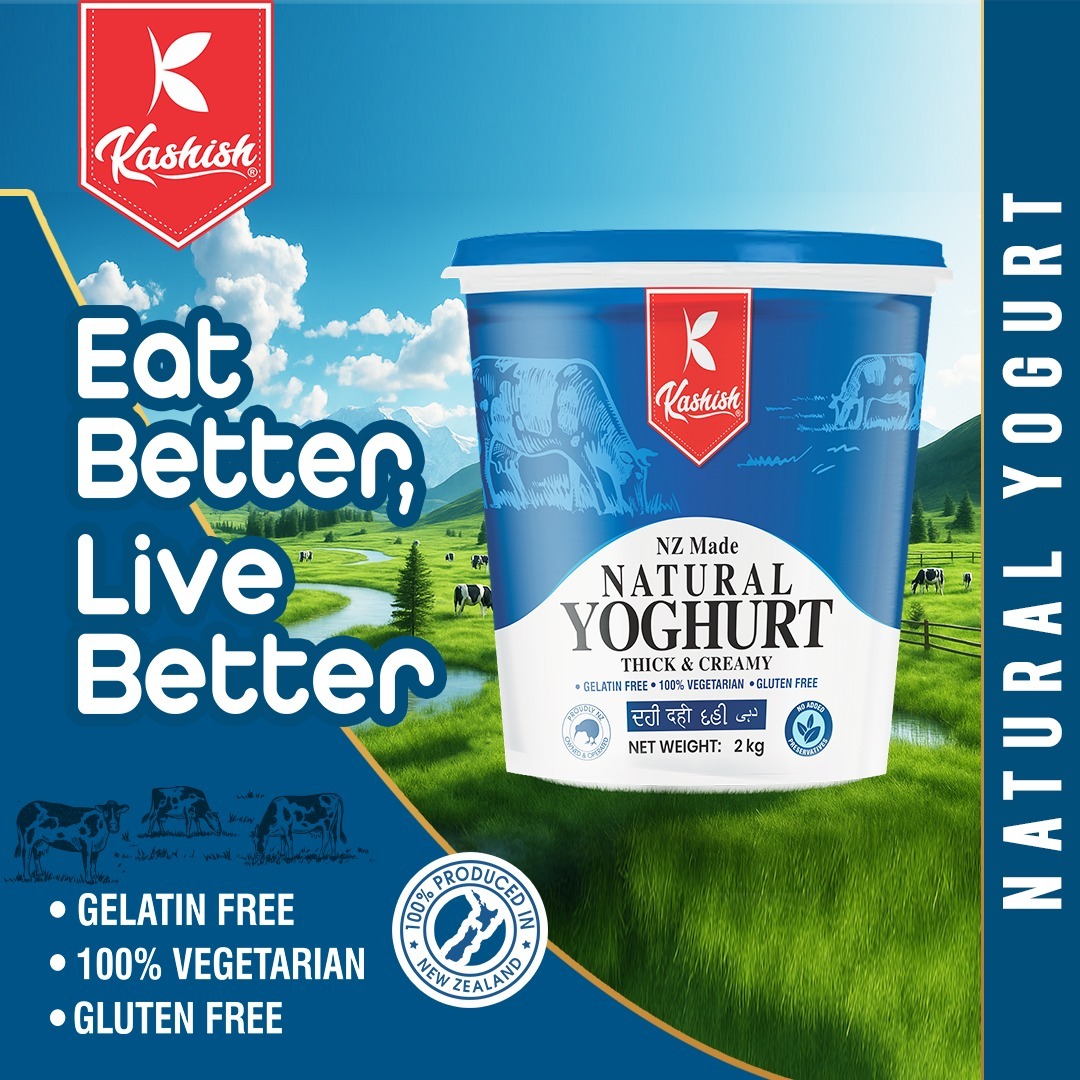An apple a day . . .

May 4 2010
The need to eat healthy and have a good diet is something we always hear about and a lot of us claim to already do. For the rest of us, the array of foods and sweets on offer everyday are too tempting and we end up indulging without meaning too.
But what is healthy eating really and how can we easily incorporate it into our lives?
Healthy eating incorporates a lot of factors. It is not just about eating the right foods, with a balance of all the food groups including carbohydrates, protein and good fatsbut also monitoring salt, sugar, additives and preservatives and using portion control.
The need for education in this area is perhaps becoming more essential as we see the rising incidence of Type Two Diabetes and Heart Disease in our Indian community. Why is this so?
While the foundation of the basic Indian diet is healthy, incorporating legumes, vegetables and other high in antioxidant spices, two areas where we overindulge is in adding extras such as butter and cream and portion sizes.
Ingredients like ghee (clarified butter) and even normal butter and margarine spreads should be used in moderation. Ghee has been used since ancient times and has many beneficial properties, also being used in ayurveda. I am not saying it should be completely cut out of our diets.
But like all things, moderation is important. When using in cooking, either for making roti and parathas or using in curries, pay attention to the amount that is being used. You may find that you are able to use a lot less and still get the taste you require without compromising your health in the long run.
Or you may want to experiment with alternatives such as low cholesterol or reduced salt options so that your meals are healthier.
Portion control is another important factor. Even while eating the healthiest diet, if you’re eating twice as much as you need too, your body will store it as fat. Over eating on a regular basis puts your whole body under stress.
The digestive system needs to work harder and longer every time you eat a large meal. Your body needs a certain amount of energy to function each day, when you eat more calories in a day than what you use, the extra calories are stored in your body as fat cells.
When the amount of fat cells increase and you gain weight, it impacts your whole body. Your heart needs to work harder to pump blood to the areas of extra weight and new capillaries (tiny blood vessels) need to be formed. This is why gaining too much weight impacts your health and can cause problems such as hypertension and heart disease.
Two fairly easy changes you may like to try to improve what you eat is eating low GI alternatives and when doing your shopping, choosing products with the heart foundation tick.
Low GI stands for Glycemic Index and simply means the amount of sugar that a product contains and how quickly it will increase the amount of sugar in your blood. By making some small changes you can make it easier for your body to digest these foods and be healthier.
For example, eating brown or wholegrain bread instead of white. Mixing in wholemeal flour instead of just using white flour, and eating porridge instead of sugary breakfast cereals. This benefits you in two ways.
1. It contains less sugar so it is healthier for you.
2: They are slow release foods so they keep you fuller for longer which can help you eat less during the day and help with weight management.
The heart foundation tick is a red tick that is displayed on foods in the supermarket. The health food foundation puts this tick on a wide variety of products that are the healthier option to help reduce heart disease in New Zealand.
These products have the tick because they contain low levels of fats, salt and calories compared to similar products. The point of it is to make it easy for you to identify which is the healthier brand or product when buying bread, meat, dairy, sauces etc. Next time you are out shopping keep and eye out for the tick and try to use heart foundation endorsed products to help prevent heart disease.
Lastly, remember to keep up your water intake. Hydration is important and the best source of it is natural filtered water rather than sweet or sugary drinks. Try to have eight glasses of water a day and to make it easier, keep a drink bottle handy so you ca keep sipping throughout the day.
Quick tips in conclusion:
- eat a variety of nutritious foods
- eat less fatty, salty, sugary foods
- keep fried treats to a minimum or use an alternative way of cooking
- eat more vegetables and fruits
- fully breastfeed infants for at least six months
- be active every day for at least 30 minutes in as many ways as possible
- add some vigorous exercise for extra benefit and fitness
- aim to maintain a healthy weight throughout life
Chiropractors believe in using the best and most natural options for your body to optimise your health. Diet and exercise is part of a holistic lifestyle and incorporated into a chiropractic health care programme. For more information please feel free to contact me.
- Adeela Afiz is a final year chiropractic intern at the New Zealand College of Chiropractic
The need to eat healthy and have a good diet is something we always hear about and a lot of us claim to already do. For the rest of us, the array of foods and sweets on offer everyday are too tempting and we end up indulging without meaning too.
But what is healthy eating really and how can we...
The need to eat healthy and have a good diet is something we always hear about and a lot of us claim to already do. For the rest of us, the array of foods and sweets on offer everyday are too tempting and we end up indulging without meaning too.
But what is healthy eating really and how can we easily incorporate it into our lives?
Healthy eating incorporates a lot of factors. It is not just about eating the right foods, with a balance of all the food groups including carbohydrates, protein and good fatsbut also monitoring salt, sugar, additives and preservatives and using portion control.
The need for education in this area is perhaps becoming more essential as we see the rising incidence of Type Two Diabetes and Heart Disease in our Indian community. Why is this so?
While the foundation of the basic Indian diet is healthy, incorporating legumes, vegetables and other high in antioxidant spices, two areas where we overindulge is in adding extras such as butter and cream and portion sizes.
Ingredients like ghee (clarified butter) and even normal butter and margarine spreads should be used in moderation. Ghee has been used since ancient times and has many beneficial properties, also being used in ayurveda. I am not saying it should be completely cut out of our diets.
But like all things, moderation is important. When using in cooking, either for making roti and parathas or using in curries, pay attention to the amount that is being used. You may find that you are able to use a lot less and still get the taste you require without compromising your health in the long run.
Or you may want to experiment with alternatives such as low cholesterol or reduced salt options so that your meals are healthier.
Portion control is another important factor. Even while eating the healthiest diet, if you’re eating twice as much as you need too, your body will store it as fat. Over eating on a regular basis puts your whole body under stress.
The digestive system needs to work harder and longer every time you eat a large meal. Your body needs a certain amount of energy to function each day, when you eat more calories in a day than what you use, the extra calories are stored in your body as fat cells.
When the amount of fat cells increase and you gain weight, it impacts your whole body. Your heart needs to work harder to pump blood to the areas of extra weight and new capillaries (tiny blood vessels) need to be formed. This is why gaining too much weight impacts your health and can cause problems such as hypertension and heart disease.
Two fairly easy changes you may like to try to improve what you eat is eating low GI alternatives and when doing your shopping, choosing products with the heart foundation tick.
Low GI stands for Glycemic Index and simply means the amount of sugar that a product contains and how quickly it will increase the amount of sugar in your blood. By making some small changes you can make it easier for your body to digest these foods and be healthier.
For example, eating brown or wholegrain bread instead of white. Mixing in wholemeal flour instead of just using white flour, and eating porridge instead of sugary breakfast cereals. This benefits you in two ways.
1. It contains less sugar so it is healthier for you.
2: They are slow release foods so they keep you fuller for longer which can help you eat less during the day and help with weight management.
The heart foundation tick is a red tick that is displayed on foods in the supermarket. The health food foundation puts this tick on a wide variety of products that are the healthier option to help reduce heart disease in New Zealand.
These products have the tick because they contain low levels of fats, salt and calories compared to similar products. The point of it is to make it easy for you to identify which is the healthier brand or product when buying bread, meat, dairy, sauces etc. Next time you are out shopping keep and eye out for the tick and try to use heart foundation endorsed products to help prevent heart disease.
Lastly, remember to keep up your water intake. Hydration is important and the best source of it is natural filtered water rather than sweet or sugary drinks. Try to have eight glasses of water a day and to make it easier, keep a drink bottle handy so you ca keep sipping throughout the day.
Quick tips in conclusion:
- eat a variety of nutritious foods
- eat less fatty, salty, sugary foods
- keep fried treats to a minimum or use an alternative way of cooking
- eat more vegetables and fruits
- fully breastfeed infants for at least six months
- be active every day for at least 30 minutes in as many ways as possible
- add some vigorous exercise for extra benefit and fitness
- aim to maintain a healthy weight throughout life
Chiropractors believe in using the best and most natural options for your body to optimise your health. Diet and exercise is part of a holistic lifestyle and incorporated into a chiropractic health care programme. For more information please feel free to contact me.
- Adeela Afiz is a final year chiropractic intern at the New Zealand College of Chiropractic







Leave a Comment